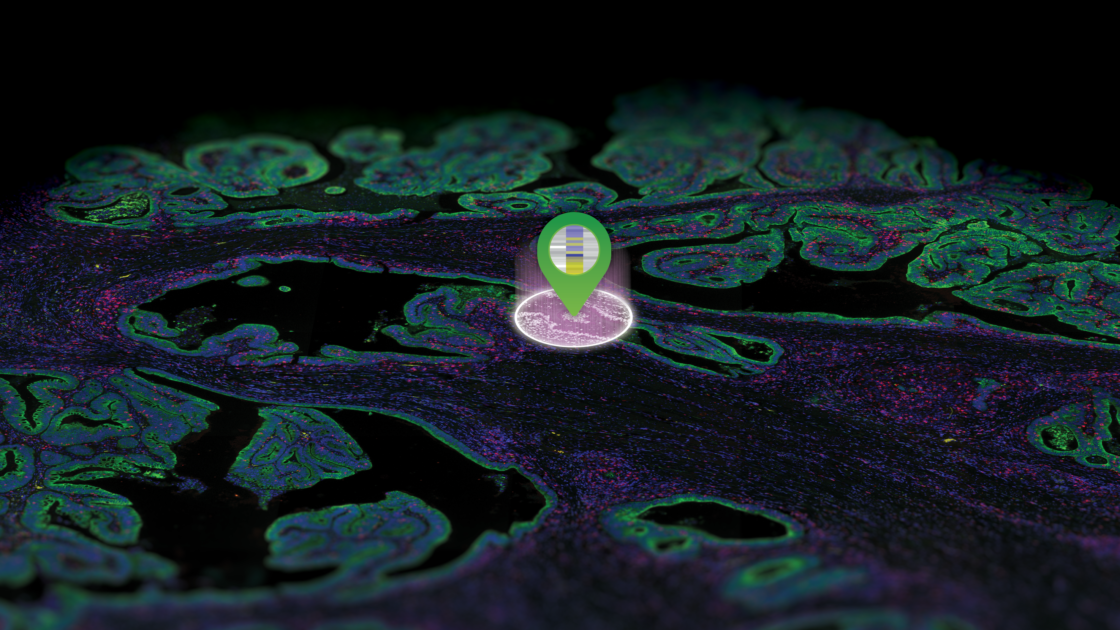
How the Field of Immuno-Oncology is Changing Fast
Immuno-oncology, also known as cancer immunotherapy, is a treatment that harnesses the power of our immune system to fight cancer. The selective efficacy of immunotherapies continues to provide impetus for innovative solutions that can facilitate a deeper molecular interrogation of cancer biology.
Researchers are increasingly adopting high-throughput technologies that capture morphological details, to elucidate cell-matrix adhesive interactions and their governance of tissue architecture and function. By integrating spatial contextual information, they can enhance the granularity of gene expression and protein analysis findings and generate a more comprehensive depiction of the highly-complex and heterogeneous tumoral landscape.
In light of this, NanoString developed the GeoMx® Digital Spatial Profiler (DSP) to enable a spatially resolved and multiplexed characterization of RNA and protein targets within tissue sections of clinical interest.
The ability of spatial biology to redefine precision in immuno-oncology was highlighted during a NanoString-sponsored GeoCast event that was held on April 9, 2019. Guest speakers were invited to discuss spatial profiling in cancer immunotherapy and present data using the GeoMx DSP platform.

Omer Bayraktar, Ph.D., from the Wellcome Sanger Institute, emphasized the importance of preserving spatial positioning and cellular heterogeneity within tissue architecture when quantifying the transcriptome. The organization of resident cells within a tissue strongly influences its function. To thoroughly understand tissue pathology and disrupted mechanisms in diseases, we therefore need to look at activity both within a cell and amongst neighboring cells.
He also highlighted the value in simultaneously analyzing multiple analyte types (RNA and protein) and a multitude of targets (high-plex). While tissue function is typically reflected in the underlying RNA signature, it is directly dictated by proteins. And a multiplexing capability ensures a high level of sensitivity for single-cell or near-single-cell profiling.
Jon Zugazagoitia, M.D., Ph.D., from Yale University School of Medicine, touched on the translational potential of high-plex spatial profiling from a clinical biomarker discovery perspective. Spatial profiling can be used to capture the temporal and spatial heterogeneity of gene expression between cancer subgroups.
By incorporating spatial information, we can uncover novel biomarkers that predict sensitivity to immunotherapy. This can be used for patient stratification in treatment selection and the design of more effective targeted drugs. The clinical utility of spatial analysis, however, hinges on its applicability to clinical practice as well as the profiler’s individual components and ability to quantify markers from distinct tumor compartments.
E. Aubrey Thompson, Ph.D., from the Mayo Clinic, used spatially-defined analysis to survey tumor-immune interactions and assess their predictability of cancer treatment response. Including cell-cell spatial relationships helps us extract specific immune features that strongly influence patient outcome. He also elaborated on the need to focus such analysis on a small region of interest to improve detection sensitivity.
Sergio Rutella, M.D., Ph.D., from the John van Geest Cancer Research Center, explored the variable response to immunotherapy treatments by harnessing information on tumor topography. He spatially profiled bone marrow biopsies to interrogate the quality and distribution of tumor-infiltrating immune cell populations.
This approach helped him further dissect the complex tumor microenvironment landscape and evaluate the relationship between its immune contexture and treatment response. He noted that flexibility in customizing panels is essential in his work given the field’s ever-evolving nature.
Joseph M. Beechem, Ph.D., from NanoString’s Research and Development team, explained the research-based considerations that went into designing the GeoMx DSP. The profiler examines both RNA and protein due to their complementarity in biomarker discovery. It also uses an adaptive microscope to accommodate varying tissue geometry.
Learn more about spatial profiling today!

